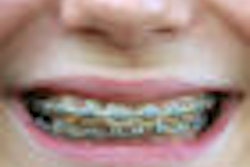A Health Research Board-funded initiative, based at University College Cork, has produced a comprehensive evidence-based guideline to reduce dental caries in children in Ireland.
Key recommendations include an increased emphasis on early identification of children who are at high risk of developing decay, and strategies to prevent decay for high-risk individuals and the population at large, according to the university.
Dental caries is the single most common chronic disease in Irish children, the university noted. More than half of 5-year-olds living in areas with nonfluoridated water and one in three living in fluoridated areas have one or more teeth that are decayed, filled, or extracted because of decay. Half of all 12-year-olds and 75% of all 15-year-olds have experienced decay in their permanent teeth.
"We systematically reviewed the best international research on prevention of tooth decay in children and examined relevant guidelines developed in other countries," said Carmel Parnell, B.D.S., M.P.H., lead researcher and a senior dental surgeon in the Health Service Executive, the agency responsible for providing health and social services in Ireland. "This evidence was then considered by our multidisciplinary Guideline Development Group, in the context of the Irish health service and the limited existing public dental services."
Historically, Ireland's public dental service has tried to maximize its available resources by focusing on school-aged children and preventing decay in permanent teeth, "but we know we are seeing children too late to effectively prevent decay," she added.
"With all of the research evidence pointing toward early identification and preventive measures, particularly at a very young age, we realized that we need involve public health nurses, practice nurses, GPs [general practitioners], and other primary care workers, all of whom have regular contact with young children, in identifying preschool children at high risk of decay, and channeling them into the dental services," Dr. Parnell said. "In the context of our current healthcare system, this seemed the most practical way to develop needs-based access to dental services for high-caries-risk preschool children."
As part of the research work, the team consulted with key stakeholders to develop the recommendations contained in this guideline. Among the recommendations:
- An oral assessment should be incorporated into each child's developmental visit from the age of 8 months and recorded in the child's health record.
- Referral pathways should be developed to ensure preschool children, who are at high risk from tooth decay, can be referred from primary, secondary, and social care services into dental services.
- Children should be offered a dental assessment during their first year in primary school.
- A formal caries risk assessment should be done for children attending the dental clinic for dental assessment or emergency care, using the newly developed Caries Risk Assessment Checklist.
- The Caries Risk Assessment Checklist should be integrated into the electronic patient record.
"These guidelines were drawn up in consultation with groups such as the Public Health Nurses because we recognized that participation of front-line primary care staff is a necessary and cost-effective way of identifying at-risk preschool children, and getting them into care quickly," said Helen Whelton, B.D.S., Ph.D., M.D.P.H., M.F.P.Ha., a professor at University College Cork who led the project guideline team. "We wanted the guidelines to be practical, to use the existing healthcare services, and to take a patient-centered approach."
If health research is going to have a real impact on public health and patient care, it must be grounded in evidence, added Enda Connolly, chief executive of the Health Research Board. "It also needs to be translated from a good idea into a change in practice or policy for maximum effect. This project is a perfect illustration of how this can be achieved in an Irish setting," he said.
Copyright © 2009 DrBicuspid.com



















